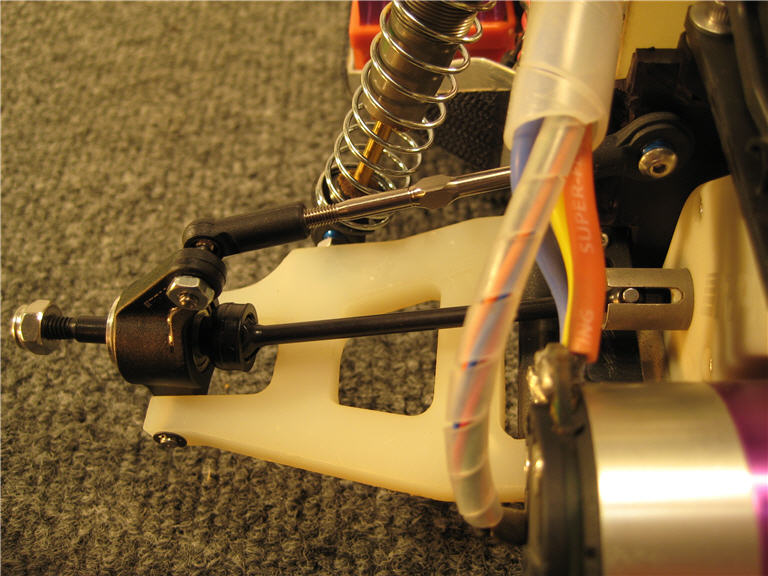As David mentioned, moving the rear link pivot is key to maintaining constant rear camber. That’s the case in my setup, and it also prevents the telescoping effect - the dogbone stays in the same place in the out drive throughout the full range of rear arm travel.
As you can see in this photo, the rear link on my car is mounted substantially inward. I installed these using the shock tower mounting holes (this location required trimming the motor plate for clearance).

My son and I have run this car
hard on a variety of surfaces from grass to sand to hard-packed Georgia clay and it performs very well. We haven’t experienced a single component failure with this current setup in many hours of running, and it’s currently powered by a very hot Mamba Max ESC/motor combo. It handles very well, corners flat and is very forgiving. Like Jason’s car, it tends to push on power a bit, but I think the solution is in the rear mounts like he mentioned. Or maybe it's just a greedy trigger finger in my case? Probably both...

Anyway, with some real tuning, and patience, it should be a pretty competitive setup.
Here’s my formula:
Rear
• Dynotech Klein rear arms (RPM worlds arm replica)
• 3 degree Andy’s arm mounts
• RPM RC10GT hub carriers
• 3/16” X 1/2" Avid bearings
• B44 rear CVA kit
• B4 rear axle spacers
• 3/16” axle shims (I forget how many on each side)
• JConcepts Rulux B4 rear wheels
Front
• Dynotech Klein front arms (RPM worlds arm replica)
• RC10T front nose plate and bulkhead
• RC10T2 front shock tower
• B4 caster blocks (drilled to accept 1/8” hinge pins)
• B4 steering blocks
• B4 kingpins
• B4 front axles
• JConcepts Rulux B4 front wheels
The information in this post is based on my experiences. Your results may vary. 
